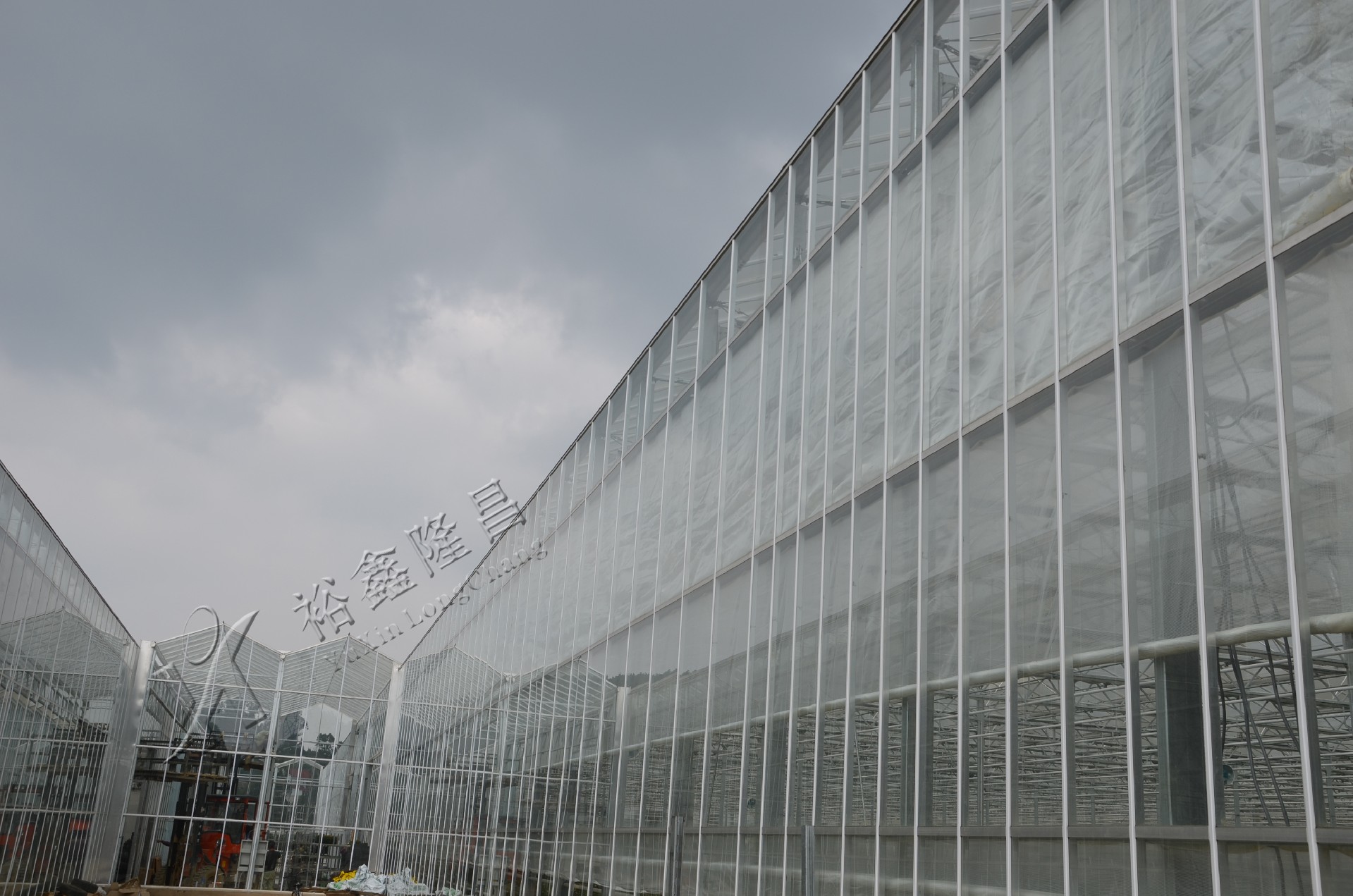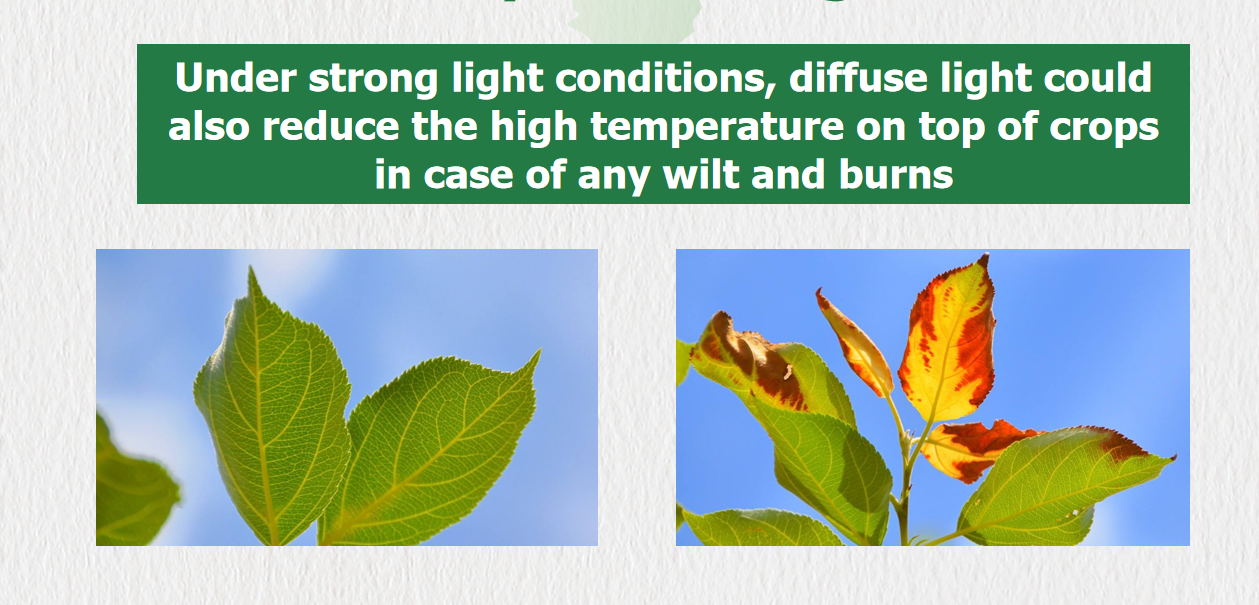
Four major uses of diffused glass for glass greenhouses
Glass greenhouses are now the leader in the greenhouse planting industry. The average service life of the glass building materials used is 15 years. This significant advantage of long service life has led to the phenomenon that glass greenhouses account for an increasing share of the greenhouse industry. .
As a main manufacturer of greenhouse glass, Yuhua has two main specifications of slow-scattering glass used in greenhouses, a diffuse scattering glass with a standard light transmittance of 91.5%, and a scattering glass with a high light transmittance of 97.5% coating ( Proper name for anti-reflective glass). The two specifications of glass are divided into 8 haze specifications in total to adapt to the different heights of the greenhouse and the special needs of the glass for lighting.
First, let’s take a brief look at the conventional thickness of greenhouse scattering glass. The main recommendation is 4mm thickness, and the second one is 5mm. The difference between 4mm and 5mm lies in thermal insulation and safety. There is no problem for daily use in the greenhouse.

Four major uses of greenhouse diffuse glass for greenhouse cultivation:
1: Change hard light to soft light
Diffuse glass is beneficial to crop growth (especially vertical plantings). Thanks to smaller shadows on the back of the cover, soft light can penetrate deeper into the vertical depth of the crop. When we adjust the size of the light source and the distance from the crops to optimal conditions, there will be no shadows under the crops and leaves. In other words, there is no height limit for vertical cultivation of crops in a greenhouse covered with diffuse scattering glass.
2: Reduce leaf surface temperature
Compared with ordinary float glass, scattering glass can increase vegetable yield by 7-12% in crop growth. Shorten the growth cycle of ornamental crops.
Scattered light flattens peaks in leaf temperature, creating more sustainable growth conditions.
For fruits, the effect on nutrient absorption is greater than the effect on growth rate.
In many plantings and experiments, it was found that the leaf temperature of the top layer of the crop was higher under float glass than under scattering glass (tested at the same distance). Especially when it reaches its peak from 12:00 to 14:00, the temperature exceeds 32 degrees Celsius. 32 degrees Celsius is the upper boundary of the comfortable growing temperature for most fruits and vegetables, which will cause crops to slow or stop growing for two hours at noon every day.
The surface temperature of crop leaves under diffuse scattering glass fluctuates in the range of -2 to +2 degrees Celsius, which is more stable than the -2 to +6 degrees Celsius of float glass. This means that under the conditions of float glass, the environmental control system and irrigation system face more severe challenges. Generally speaking, the air temperature in the greenhouse is set to 2-3 degrees Celsius higher than the leaf temperature (30 degrees Celsius for most plants), which can ensure relatively good and stable growth of plants.

3: Increased production benefits
The haze of scattered glass refers to the index value of scattered light. The higher the haze, the larger the light spot processed by the material. The optimal size of its light spot is determined by the design size and height of the greenhouse. To put it more complicatedly, since hemispheric irradiation affects crop output, for every 1% increase in hemispheric irradiation, tomato production increases by 0.8%. The selection of haze values will be considered in a certain order so that the crops can obtain the maximum hemispheric irradiation value, which means that the minimum haze value can be selected.
4: Shorten the growth cycle
Under the function of scattering glass, the light intensity throughout the day can be controlled below 32°C, which can avoid the loss of light for about 2 hours at noon during the day. The lighting time in the greenhouse can be 2 more hours per day than other greenhouses. hours, the entire crop growth cycle can be shortened by about a week (test objects, flowers, tomatoes, cucumbers, etc.).
Diffuse glass for greenhouses is different from other types of glass. Diffuse glass is a product type specially developed for the development of domestic agricultural glass greenhouses. Other types of glass are more used in buildings, which are suitable for daily life. The two are incompatible.
Tags:anti-reflective glass diffuse glass agricultural greenhouses glass greenhouse venlo greenhouse AR glass greenhouses glass agricultural glass horticultural glass #greenhouseglass #Antireflectiveglass #Diffusetemperedglass #Ultrawhitefloatglass #agriculturalgreenhouseglass #diffuseglass #horticulturalglass #Tomatogreenhouse #Coloredpeppergreenhouse #Lettucegreenhouse #Agriculturalgreenhouse #ARglass #venlogreenhouse #greenhouseglass #Antireflectiveglass #Diffusetemperedglass #Ultrawhitefloatglass #agriculturalgreenhouseglass #diffuseglass #horticulturalglass #Tomatogreenhouse #Coloredpeppergreenhouse #Lettucegreenhouse #Agriculturalgreenhouse #ARglass #venlogreenhouse #GlassManufacturer #invernadero #ArchitecturalGlass #ClearFloatGlass #FloatGlass
Previous:The difference between tempered glass and diffused glass used in greenhouses
Next:How to protect glass greenhouses in extreme rain and snow weather



















